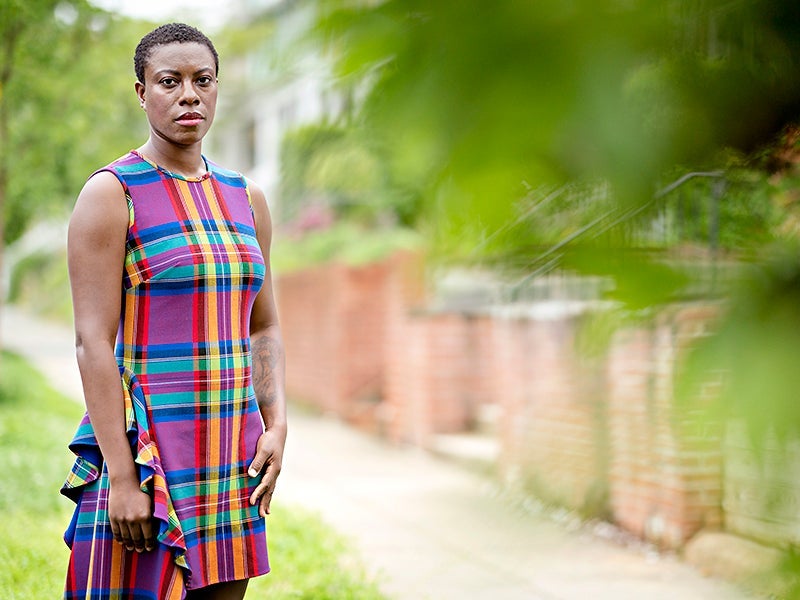‘For Some, Energy Efficiency Is the Difference Between Keeping the Utilities on or Having Them Shut off’
Sharonda Williams-Tack leads a campaign that seeks to help struggling households reduce their utility bills through energy efficiency retrofits.

This page was published 3 years ago. Find the latest on Earthjustice’s work.
Energy efficiency upgrades often include pricey solutions like updating drafty windows and swapping out gas-guzzling furnaces. But if we’re going to fight the climate crisis in a big way, everyone must be able to access these upgrades, including low-income and Black households.
Sharonda Williams-Tack, a leader of Sierra Club’s Healthy Communities Campaign, seeks to help struggling households reduce their utility bills through energy efficiency retrofits that can protect the planet — and people’s lives. Alongside allied groups including Earthjustice, the campaign recently got a big win in Michigan. There, legal settlements pushed energy utilities to target their plans for efficiency upgrades in places like Flint, Michigan, where the cost of energy can be almost 20% of a household’s income.
Why improve energy efficiency in individual households?
When the percentage of your household income that’s going to your energy bill is more than 6%, you have households just bleeding energy.
It’s not just about turning off my lights a little bit more or making sure my fridge is fully closed. There are people sitting in homes whose roofs are leaking, their windows aren’t fully insulated, their appliances are a decade old, and they’re wasting energy without really doing anything. And they’re covered in blankets in the wintertime because they have an energy bill that is $600 per month even though they live in a one-bedroom apartment.
For some, energy efficiency is the difference between keeping the utilities on or having them shut off. It’s having to make decisions about what they’re feeding their kids that month and wondering if their kids are going to be taken away because their utilities will be disconnected.
How can we reduce high energy burdens?
Many existing programs for energy efficiency upgrades aren’t accessible to low-income families, and they aren’t really targeted. A lot of what we’ve been doing over the past five years in Michigan is working with the utilities to identify customers with high utility debt, who are at risk of shutoff, and then making sure those folks have access to no-cost energy efficiency upgrades. These include replacing energy inefficient appliances, replacing water heaters, sealing windows, upgrading insulation, and finding ways to get health and safety measures into homes.
What’s the connection to health and safety?
For many people who suffer from high energy burdens, their homes are not safe. They have indoor air quality issues, as well as issues with mold, lead, and asbestos. We want to go into these houses with the funding to make health and safety repairs and improve the air quality. Many households that have asbestos, mold, and lead are not eligible for energy efficiency renovations, so we have to get past those barriers first.
You’re also seeing mental health issues as people deal with the constant struggle of paying their energy bills each month. The debt is going up, the late fees are going up, they have to pay a reconnection fee if they get disconnected. They have to ask, “Am I just feeding my kids this month, and not myself?” It’s just debilitating to people.
How can energy upgrades bring jobs to the community?
Often in energy burdened communities there are large amounts of homes in disrepair. There are some states (PA, CT, MI) working to pass bills and dedicate state budget dollars towards funding health and safety repairs. There is a great opportunity to grow an equitable clean energy workforce that includes people who live in these communities who suffer from high rates of poverty.
What’s it like collaborating with Earthjustice?
Earthjustice has superstar lawyers. We could not do this work without Earthjustice. They have been our masterminds. There’s the legal, technical piece of it; there’s an economic piece to this work; there’s also data analysis. Earthjustice has been key in advocating for better programs in Michigan and in designing these programs. It’s been such an amazing pairing.
What’s the most impactful part of this project?
Two years ago, when we asked the Michigan utilities to do geo-targeted programs, it was a time for us to be clear about the connection to race. When you look at the census tracts that are majority Black, that’s where you see the highest energy burden. Being able to discuss that and name that with the utilities is really important.
After our legal settlement with Earthjustice, we had one of our first meetings with the utility to figure out exactly where they were going to target their investments, and they had their consultant overlay redlining data onto where they’re seeing the existing energy burden. I know the utility would not even think about doing that without us pushing on the importance of talking about race and energy burden. I’m really proud of that and hope we can model that and continue those conversations.
Earthjustice’s Clean Energy Program uses the power of the law and the strength of partnership to accelerate the transition to 100% clean energy.